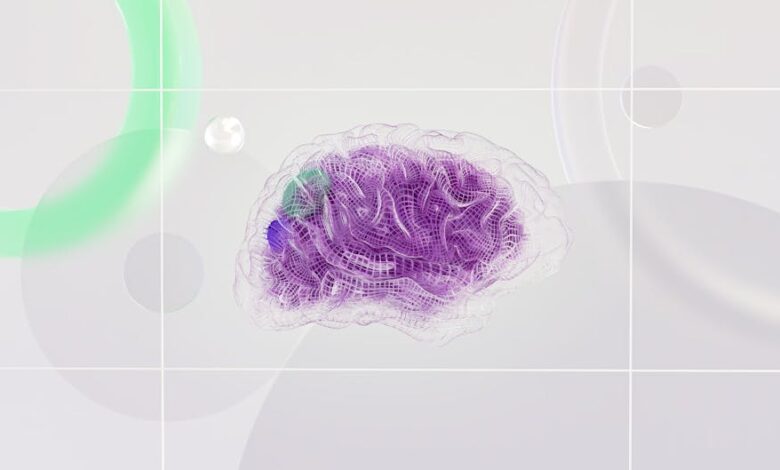The Data Dilemma in Instance Segmentation: Why More Isn’t Always Enough

In the rapidly evolving world of artificial intelligence, our models are becoming increasingly sophisticated, capable of tackling complex tasks like never before. Yet, beneath all the impressive capabilities, there’s a fundamental truth: AI models are incredibly data-hungry. This is especially true for advanced computer vision tasks like instance segmentation, which demands not just identifying objects, but precisely outlining each one within an image, pixel by pixel, and assigning it a category. Think about an autonomous vehicle needing to distinguish between every pedestrian, bicycle, and car individually, not just as a blob of “road user.”
The challenge? Creating the massive, meticulously annotated datasets required for instance segmentation is excruciatingly slow, expensive, and often a bottleneck. Manual annotation is a painstaking process, limiting the scale and diversity of real-world datasets. This often leads to models that, while brilliant, are prone to overfitting, particularly on rarer categories — a common problem in real-world scenarios where some objects appear far less frequently than others. How do we feed these hungry AI beasts without breaking the bank or sacrificing accuracy?
Enter DiverGen, a groundbreaking approach by researchers from Zhejiang University and vivo Mobile Communication Co. that redefines how we leverage generative AI to make large-scale instance segmentation training not just possible, but genuinely effective. DiverGen isn’t just about generating more data; it’s about generating smarter data, designed to push the boundaries of what our models can learn.
The Data Dilemma in Instance Segmentation: Why More Isn’t Always Enough
Instance segmentation is a cornerstone for countless visual applications, from medical imaging to robotics. But as models grow in complexity and capacity, their demand for training data skyrockets. Current datasets, like the prominent LVIS, while extensive, still struggle to provide enough diverse examples to prevent models from developing biases. When a model sees too many examples of a dog but only a handful of a specific, rare bird species, it naturally struggles to recognize that bird in the wild.
Past attempts to use generative models for data augmentation have shown promise. These methods synthesize additional training data to supplement real datasets. However, many of these approaches haven’t fully tapped into the potential of generative AI. Some still relied on crawling images from the internet (uncontrolled content), while others used generic prompt templates, limiting the diversity of generated outputs. Crucially, few delved into the underlying “why” — how exactly does generative data improve performance, beyond simply adding more samples?
The DiverGen team tackled this head-on, realizing that merely increasing data quantity isn’t enough. We need to address the fundamental discrepancies between the data models currently learn from and the vast, nuanced distribution of real-world data.
DiverGen’s Game-Changing Perspective: Understanding Distribution Discrepancy
At the heart of DiverGen’s innovation is a deep dive into the concept of “distribution discrepancy.” Essentially, the distribution of data a model learns from its limited training set often doesn’t perfectly match the true distribution of real-world data. This gap leads to overfitting and poor generalization, especially for those challenging rare categories.
DiverGen’s core insight is that generative data, when crafted intelligently, can effectively expand the data distribution that a model can learn. It’s like expanding a model’s worldview, exposing it to scenarios and variations it might not typically encounter in a manually annotated dataset. By introducing generative data, we can alleviate the bias inherent in real training data, dramatically mitigating overfitting and improving overall performance.
But here’s the kicker: not all generative data is created equal. The researchers discovered that the diversity of this synthetic data is absolutely crucial. Simply churning out similar images, even if generated, won’t solve the problem. The goal is to intelligently enhance this diversity to truly bridge the gap between learned and real-world distributions.
Unleashing Data Diversity: DiverGen’s Three-Pronged Attack
Based on their understanding of distribution discrepancy, the DiverGen team proposed a powerful “Generative Data Diversity Enhancement” strategy. This isn’t just a single trick; it’s a multi-faceted approach to ensure generated data truly broadens a model’s learning horizon. Here’s how they do it:
Category Diversity: Expanding the Worldview
Imagine teaching a child about animals. Showing them only cats and dogs won’t prepare them for a zebra. Similarly, models benefit from exposure to a wider range of object categories. DiverGen goes beyond the categories found in the target LVIS dataset by incorporating extra categories from ImageNet-1K. This broadens the generative model’s understanding of diverse objects, making the synthetic data richer and more effective at adapting to unseen variations in the real world.
Prompt Diversity: Smartly Guiding Generation
The “prompts” we give to generative AI models are their instructions, defining what they should create. Manually designing prompts for millions of images quickly becomes impossible and often leads to repetitive outputs. DiverGen tackles this by leveraging large language models (LLMs) like ChatGPT. Instead of simple, canned prompts, they ask the LLM to generate maximally diverse prompts under specific constraints. This intelligent prompt generation vastly enriches the variety of output images, ensuring the generative models aren’t just creating slightly different versions of the same thing.
Generative Model Diversity: Blending Realities
Just as different artists have unique styles, different generative AI models produce images with subtle (or not-so-subtle) stylistic variations and characteristics. DiverGen ingeniously harnesses this by using not one, but two distinct generative models – Stable Diffusion and DeepFloyd-IF. By mixing data from both during training, the target segmentation model learns to adapt to a broader spectrum of visual styles and distributions, making it more robust and less susceptible to the quirks of any single generative source.
These strategies combined allow DiverGen to scale data to millions of samples, critically, while *maintaining the trend of model performance improvement*. This means the benefits don’t plateau; they continue to grow with more diverse, generated data.
The Smarter Pipeline: From Pixels to Performance
Generating diverse data is one thing; ensuring that data is high-quality and efficiently integrated into training is another. DiverGen optimizes the entire workflow with a sophisticated four-stage generative pipeline:
- Instance Generation: This is where the magic of Generative Data Diversity Enhancement takes place, producing a vast pool of raw, diverse images.
- Instance Annotation: Generated images need labels for training. DiverGen introduces “SAM-background,” an annotation strategy that uses background points as input for the Segment Anything Model (SAM) to obtain remarkably high-quality instance annotations.
- Instance Filtration: Not every generated image is perfect. To maintain quality, DiverGen employs a “CLIP inter-similarity” metric. By comparing embeddings (numerical representations) of generated and real data using CLIP, they can filter out lower-quality synthetic samples, ensuring only the most useful data makes it into the training set.
- Instance Augmentation: Finally, the high-quality, diverse generative data is augmented further using techniques like instance pasting, boosting the model’s learning efficiency.
This comprehensive pipeline ensures that DiverGen isn’t just a quantity play, but a quality and efficiency play as well, delivering a robust and highly effective dataset for training.
A Leap Forward for Instance Segmentation and Beyond
The results speak for themselves. On the challenging LVIS dataset, DiverGen didn’t just perform well; it significantly outperformed strong existing models like X-Paste. It achieved an impressive +1.1 box AP and +1.1 mask AP across all categories. But perhaps even more exciting are the gains for those previously neglected rare categories, where DiverGen boosted performance by +1.9 box AP and +2.5 mask AP. This isn’t just an incremental improvement; it’s a testament to the power of intelligently generated, diverse data in overcoming long-standing challenges in computer vision.
DiverGen provides invaluable insights into the role of generative data, illustrating that it can indeed expand the learnable data distribution, mitigate overfitting, and that diversity is paramount. By carefully orchestrating category, prompt, and generative model diversity, and refining the data pipeline, this work lays a powerful new foundation for scaling instance segmentation to levels previously thought unfeasible. It’s a clear signal that the future of large-scale, high-performing AI models might not just be about finding more real-world data, but about intelligently creating the data they truly need to thrive.





